There’s nothing I love more than exploring rockpools, they’re like a window to the big blue sea beyond. But life in our rockpools is no picnic, let me take you to the rockpool horror show…
Welcome to the Rockpool Horror Show!
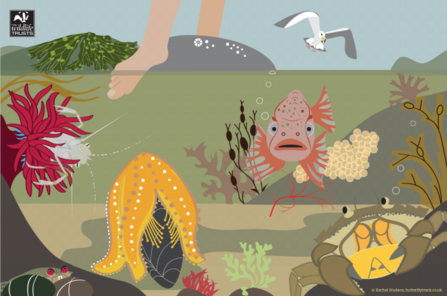
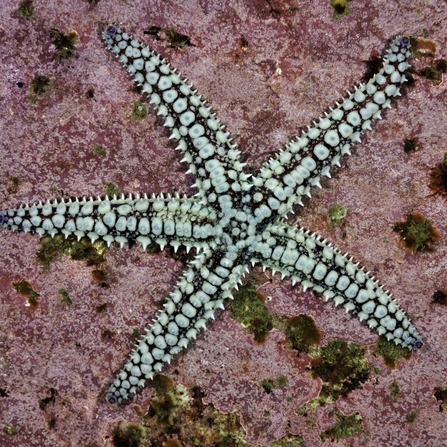
Linda Pitkin/2020VISION
Eaten alive by starfish
Starfish may look harmless, but they’re active predators with BIG appetites! Their favourite food is mussels, but they need a special ability to eat them. After hunting out a mussel, the starfish uses its hundreds of tube feet to grip onto the mussel’s shell, slowly prising it apart. It then pushes its stomach out of its mouth and into the mussel’s shell. Special enzymes start to work, turning the mussel into a yummy soup-like liquid – a starfish delicacy! The starfish then draws its stomach and the mussel soup back in through its mouth before heading off to hunt its next victim. Gory!
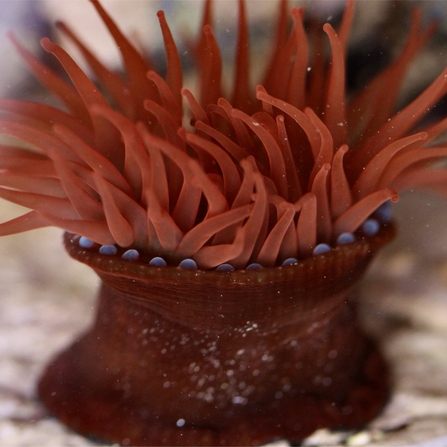
Kent Wildlife Trust
Death by stinging
Those squidgy red blobs on the rocks are actually Beadlet Anemones, unfurling their stinging tentacles when the tide comes in. Like a jellyfish, they use their tentacles to sting passing shrimps and small fish to death – making a very tasty meal! They’re also highly territorial, using their bright blue beads (that’s where they get their name) to fight off rival anemones. If you touch one and it feels sticky – that’s them stinging you!
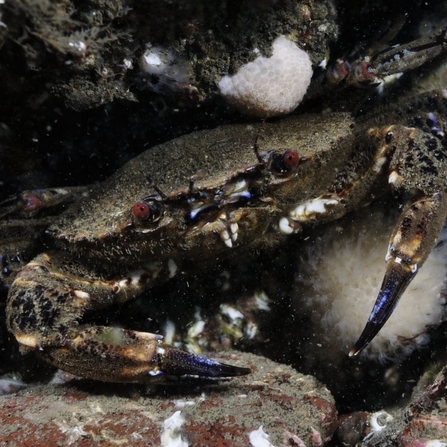
Linda Pitkin/2020VISION
Beware of the devil crab
Beware of the piercing red eyes peering out from under a rock - these belong to the Velvet Swimming Crab, a little crustacean with a fearsome reputation! Often called the devil crab, they will attack anything they see as a threat – including your fingers if you’re not careful.
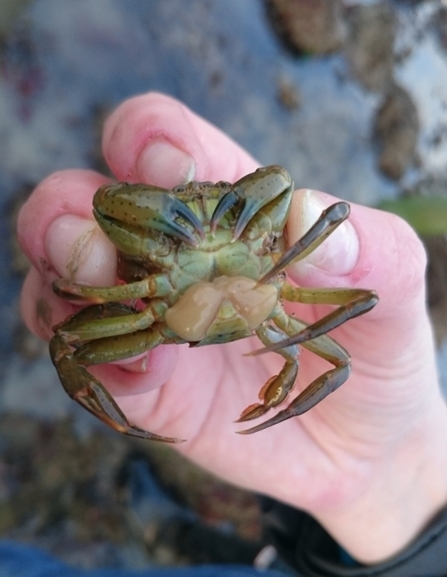
©Abbi Scott
Body Snatching Parasites
Shore Crabs are a common feature of our rockpools and I love turning them upside down to see if I’ve caught a male or female. A great orange mass on their underside means you’ve caught a female with eggs; but a smooth mass on their underside is something much more sinister. The Crab Hacker Barnacle attaches to Shore Crabs, castrating them and then growing inside their shell. As well as providing a nice, safe home, the crab also becomes a barnacle babysitter – guarding the parasite’s eggs until they’re ready to hatch! Very sneaky.
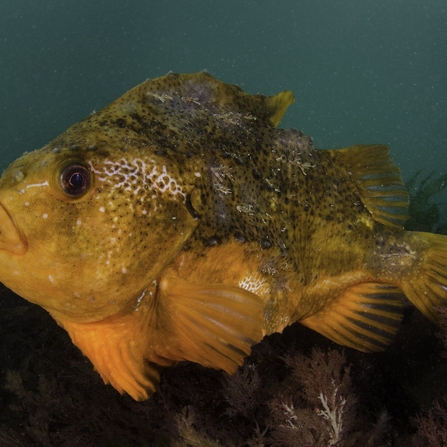
Alexander Mustard/2020VISION
Extreme Parenting
Lumpsuckers are fish that lay their eggs in rockpools in the early summer. Unlike lots of other fish, it is the Daddy that protects the eggs from predators, never leaving their side during the two months it takes for the baby fry to hatch. This leaves him open to attack, especially from the beady-eyed gulls hunting for their next fishy snack.

